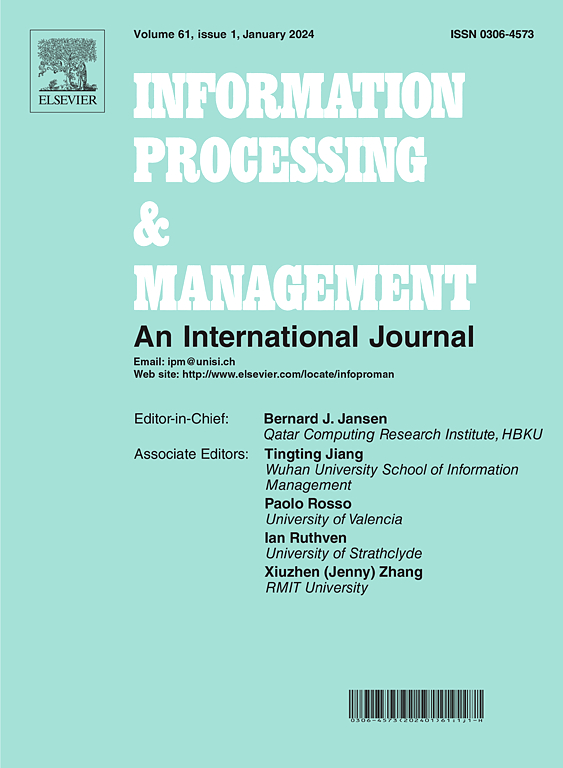Heterogeneous network for Hierarchical Fine-Grained Domain Fake News Detection
IF 7.4
1区 管理学
Q1 COMPUTER SCIENCE, INFORMATION SYSTEMS
引用次数: 0
Abstract
Fake news on social media has significant negative consequences for individuals and society. However, existing multi-domain detection methods exhibit two primary limitations: dependence on precise domain annotation and inherent bias arising from single-domain categorization. To address these challenges, this paper introduces the Domain-Specific Narrow-Coverage Tree-Based Taxonomy (), which enables more precise domain classification and domain relationship elucidation through refined categories. The constructed dataset is annotated with multiple labels by Large Language Models (LLMs), mitigating reliance on manual efforts and reducing annotation costs while maintaining annotation quality. Furthermore, a Hierarchical Fine-Grained Domain (HFGD) Fake News Detection Method is proposed, which explicitly employs a heterogeneous network to model multi-relationships. This method can mitigate domain bias and comprehensively capture news diversity and domain interactions. Specifically, domain cohesion based on news semantics is designed to reflect the relevance of news within a domain. News items are integrated as intersection nodes into the tree structure of multilevel domains to construct the heterogeneous network. Graph representation learning then fuses directly or indirectly connected news and domain information during feature enhancement. Finally, a composite loss is designed for news and domain node classification. HFGD captures potential differences and commonalities in domains and enhances label adaptation through domain interactions. Experiments on our dataset demonstrate that HFGD outperforms state-of-the-art methods by 1.08% and 0.91% in overall accuracy and macro-F1 score, respectively. Specifically, in the education and military domains with limited sample sizes, HFGD achieves 5.74% and 4.1% improvements in macro-F1 score over the second-best method. The results demonstrate our method’s effectiveness in mitigating domain bias and enhancing detection performance, providing valuable insights for practical multi-domain fake news detection systems.
求助全文
约1分钟内获得全文
求助全文
来源期刊

Information Processing & Management
工程技术-计算机:信息系统
CiteScore
17.00
自引率
11.60%
发文量
276
审稿时长
39 days
期刊介绍:
Information Processing and Management is dedicated to publishing cutting-edge original research at the convergence of computing and information science. Our scope encompasses theory, methods, and applications across various domains, including advertising, business, health, information science, information technology marketing, and social computing.
We aim to cater to the interests of both primary researchers and practitioners by offering an effective platform for the timely dissemination of advanced and topical issues in this interdisciplinary field. The journal places particular emphasis on original research articles, research survey articles, research method articles, and articles addressing critical applications of research. Join us in advancing knowledge and innovation at the intersection of computing and information science.
 求助内容:
求助内容: 应助结果提醒方式:
应助结果提醒方式:


